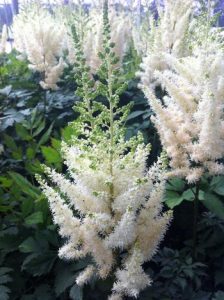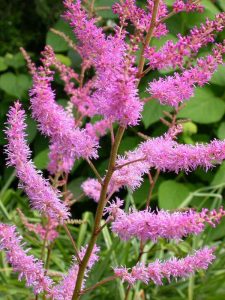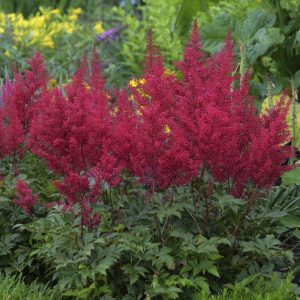Planning a special occasion in your garden anytime soon? This is nothing a little garden sprucing can’t fix. If you’re looking for a plant to make your garden stand out in the celebration, you have to get to know the Astilbe.
 Found in the forests of Asia and North America, the Astilbes are from the 18 types of rhizomatous flowering plants, a class in the family Saxifragaceae. Some would easily call them as “false goat’s whiskers” or “false spirea”.
Found in the forests of Asia and North America, the Astilbes are from the 18 types of rhizomatous flowering plants, a class in the family Saxifragaceae. Some would easily call them as “false goat’s whiskers” or “false spirea”.
They’re easily recognizable, thanks to their amazing foliage that grows in a beautiful green color, with thick, padded crest of marvelous flowers that stick out from the stem, resembling a fiery impression. The Astilbe is known to be every gardener’s favorite. These herbaceous perennials best enjoy a moist environment ideal for lakeside planting.
Growing your first Astilbe
Different plants have different needs. If you want to grow Astilbe in your garden, make sure you take note of these:
Check the soil
The soil must be moist at all times and should drain the water well. If you have clay soil, change them to the types of peat, moss, or even coarse sand for proper drainage. Astilbes prefer to be planted in a humus-rich soil that won’t easily dry up. Average to above average moisture must be achieved to grow them healthily.
Replant divisions, not the the seeds
Astilbes have a hard time germinating. Some may grow from the seeds, but can be short-lived. It’s best to replant them from another plant’s divisions to make sure they’ll have healthy foundations. Uncovered root plants need to have gaps two times their width, and 4-6 inches down.
Make sure to plant the crown at about 1-2 inches into the soil when they’re still in the pot. When roots show up on the surface, cover them with soil and press down firmly.
Avoid drying them up
They love the shade and would easily dry up when planted in direct sunlight. But also be careful not to give them too much shade if you want to grow more flowers. Growing them in deep shades may be great for their foliage, but makes astilbes produce lesser flowers.
Proper care for your Astilbe
Now that you’ve grown them in your garden, maintenance of this plant should also be properly dealt with. Manage your Astilbes and keep them in tip-top shape by following these rules:
Clump it up
Every 3 to 4 years of Spring, separate the congested clumps to replant or put them in pots. By Summer, these babies will be ready to be planted out. Astilbe flowers can also be sliced off from the stem to be put in a lovely vase inside your home.
Trim at the right parts
Trim yellow-colored leaves off to make way for fresh leaves, same with the withered flower stems after the blooming season. Don’t worry about their foliage because they usually stay until fall. Remember to never cut off the flowerheads as this will permanently stop the growth of its flowers.
Avail our specials now for more than 50 percent off discount. Click this link to check the cheapest Astilbe ever!
These are some of the Astilbes that are widely used.
Please click the image to know more about the plant.
Keep them hydrated
Check on your astilbes every day, ensuring that their soil is always moist. When rains are infrequent, it’ll be best to water them once in a while. They can’t thrive without water.
To be successful in growing and taking care of the pretty Astilbe, you must need to follow these guidelines. Astilbes are perfect additions to a garden, bringing in splotches of colors in time for a special occasion. They’re on their full bloom from May to August and won’t fail to make your garden guests notice too!
Do you want to find out more about Astilbes? Please feel free to call us at 360-263-4700. We have lots of Astilbes in SW Washington.





